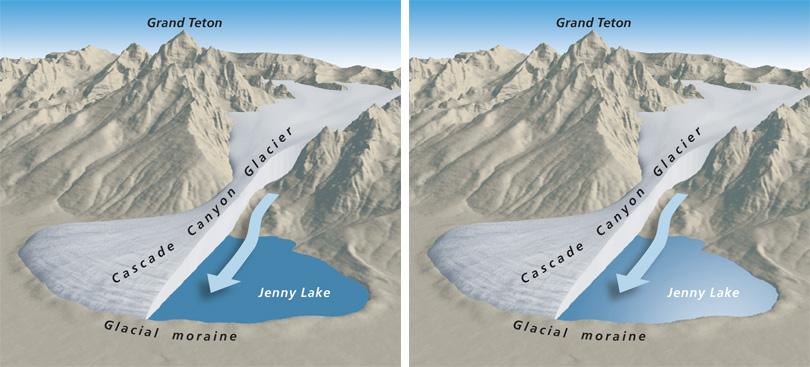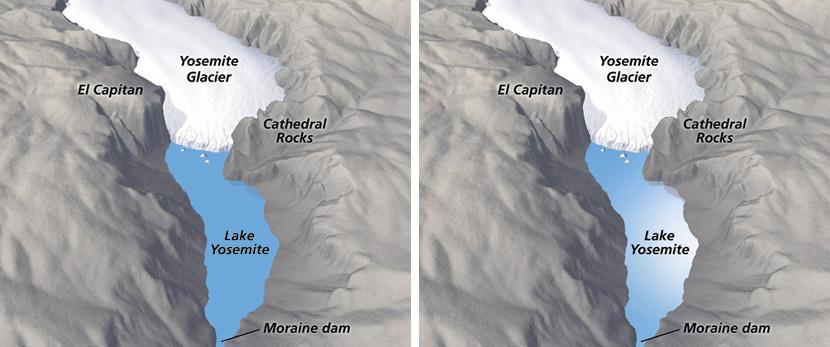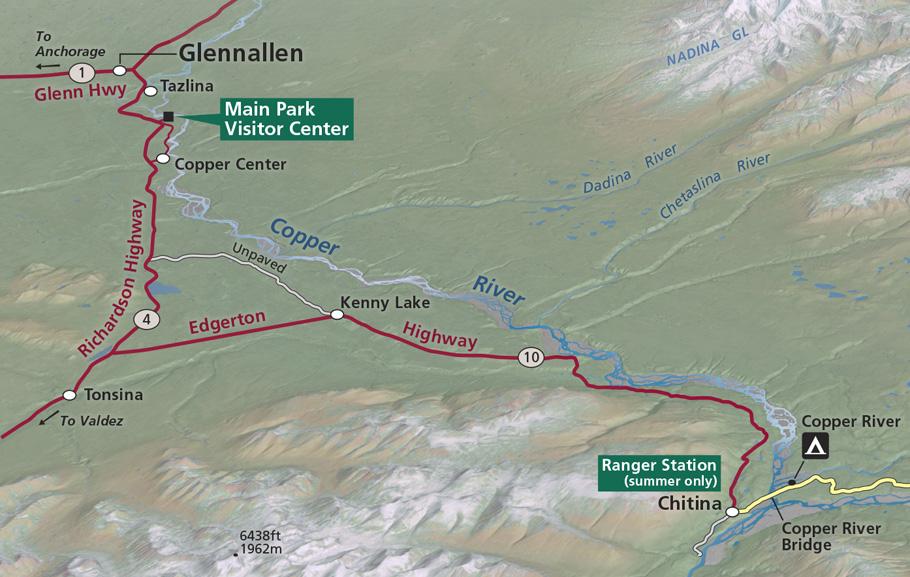Making 3D Terrain Maps |
||||||||||||||
--Water: Sun Glints |
||||||||||||||
Those of you who have perused other pages on this site may have noticed this: water bodies on most of the example maps have sun glints—one of my favorite devices for beautifying 3D terrain maps. Flat tones do not exist in nature and nor should they exist on even the simplest maps. Take for example the before-and-after geologic diagrams of Grand Teton and Yosemite national parks during the ice age (see below). The flat lakes without sun glints suggest that the entire scene is static. But with sun glints the diagrams come to life, suggesting to the reader on a subliminal level that glaciers are highly dynamic. |
||||||||||||||
 |
||||||||||||||
Jenny Lake geology diagram, Grand Teton National Park, Wyoming. |
||||||||||||||
 |
||||||||||||||
Yosemite Valley, California, during the ice age. A lake once filled the valley floor, although this experimental illustration incorrectly depicts it too large and too far down the valley. (Click image to watch an animation.) |
||||||||||||||
Procedure Adding sun glints to water bodies could not be easier: 1) Open your 3D terrain map in Photoshop. 2) Use the Magic Wand Tool to select water bodies. 3) Create a new layer and then create a layer mask. Your selection will then become the printable area on the new layer. 4) Select the Brush Tool and a very large, soft brush. Set the brush opacity at 10 percent. 5) Repeatedly dab on the water bodies to create the sun glints. Comments • If you don't like the sun glints that you initially draw, delete what is on the layer and try again. I typically have to redraw sun glints several times before I am satisfied with their size and brightness. • There is an art to drawing sun glints on water bodies. Fewer large glints generally look better than many small glints. • If the terrain adjacent to a water body is light, avoid drawing a sun glint there because the two will have a similar value, making the shoreline indistinct. • Should your sun glints have banding artifacts, applying a small amount of noise to the glints will usually remove the banding (Filter/Noise/Add Noise). • Sun glints are an excellent method for depicting flowing rivers. In the illustration below, sun glints suggest the continually changing course of the braided Copper River. To download the layered Photoshop used to create these glints, click here. |
||||||||||||||
 |
||||||||||||||
Wrangell-St. Elias National Park, Alaska. (Click map to enlarge.) |
||||||||||||||
 |
||||||||||||||